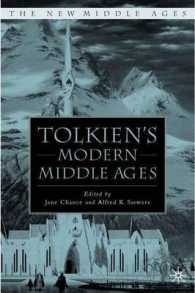- ホーム
- > 洋書
- > 英文書
- > Science / Mathematics
Full Description
The quality of a telecommunication voice service is largely inftuenced by the quality of the transmission system. Nevertheless, the analysis, synthesis and prediction of quality should take into account its multidimensional aspects. Quality can be regarded as a point where the perceived characteristics and the desired or expected ones meet. A schematic is presented which classifies different entities which contribute to the quality of a service, taking into account conversational, user as weIl as service related contributions. Starting from this concept, perceptively relevant constituents of speech communication quality are identified. The perceptive factors result from ele ments of the transmission configuration. A simulation model is developed and implemented which allows the most relevant parameters of traditional trans mission configurations to be manipulated, in real time and for the conversation situation. Inputs into the simulation are instrumentally measurable quality elements commonly used in transmission planning of telephone networks. A reduced set of these quality elements forms a basis for models which aim at predicting mouth-to-ear quality as it would be perceived by a user of the sys tem. These models are an important tool for the planner of telecommunication networks, as they allow the expected quality to be estimated in advance, even before the network has been set up. Two well-known models (the SUBMOD and the E-model) are analyzed in more detail, with an emphasis on the psy choacoustic and psychophysical backgrounds.
Contents
1. Introduction.- 2. Considerations on Quality.- 1. Speech Quality.- 2. Quality in the Context of Telecommunications.- 3. Factors Influencing the Quality of Service.- 1. Perceptive Factors.- 2. Configuration of a Telephone Connection.- 3. Simulation of a Telephone Connection for Quality Assessment Purposes.- 4. Classification of Transmission and Service Parameters.- 5. Summary.- 4. Quality Assessment in Telecommunications.- 1. Choice of Test Subjects.- 2. Articulation and Intelligibility Tests.- 3. Listening-Only and Conversation Opinion Tests.- 4. Performance Tests.- 5. User Surveys.- 6. Usability Evaluation.- 7. Assessment of Cost-Related Factors.- 8. Scaling.- 9. Development of Conversation Test Scenarios.- 10. Classification of Assessment Methods.- 11. Summary.- 5. Models for Predicting Speech Comm. Quality and Service-Related Models.- 1. Mouth-to-Ear Models Using Parameters in the Frequ. Domain.- 2. Mouth-to-Ear Models Using Scalar Parameters.- 3. Instrumental Models for Single Transmission Aspects.- 4. Call Set-Up and Call Completion Models.- 5. Customer Behavior Models.- 6. Application and Classification of Prediction Models.- 7. Summary.- 6. Relations between Factors Governing the Quality of Service.- 1. 'Relative' Quality versus 'Absolute' Quality.- 2. References and Normalization.- 3. Assessment in Listening-Only and Conversation Tests.- 4. Expectation.- 5. Influence of the Cost Factor.- 6. Multidimensional Assessment of Voice Transmission Quality.- 7. Existence of an Integral "Psychological Quality Scale".- 8. Summary.- 7. Quality of Prediction Models.- 1. Prediction for Single Perceptive Types of Impairment.- 2. Prediction for Combinations of Different Types of Impairment.- 3. Impairment Factor Principle for Low-Bitrate Codecs.- 4. Prediction ofFrequency Characteristics.- 5. Measurement of the Input Parameters.- 6. Accuracy of Quality Predictions, Limitations.- 7. Summary.- 8. Final Discussion and Conclusions.- Appendices.- A- Glossary.- B- Perceptive Characteristics Resulting from New Technologies.- 1. Impact of New Technologies and Equipment.- 2. Classification for Modeling Purposes.- C- Discussion of Articulation and Intelligibility Test Methodologies.- D- Graeco-Latin-Square Test Design.- E- SCT Scenarios.- 1. Examples of SCT Scenarios.- 2. Explanations of the SCT Dialog Structure Given to the Test Subjects.- F- Closing Questionnaire Given after Laboratory Tests.- G- E-Model Algorithm.- H- Test Conditions and Results.- 1. Test Conditions of the Isopreference Test.- 2. Relation between E-Model Predictions and Test Results.- 3. Comparison of SUBMOD Model Predictions and Test Results.






